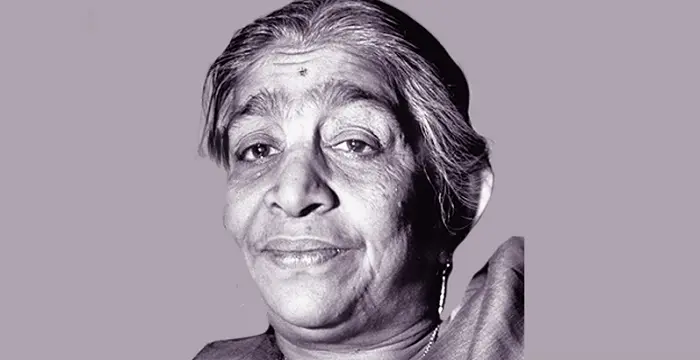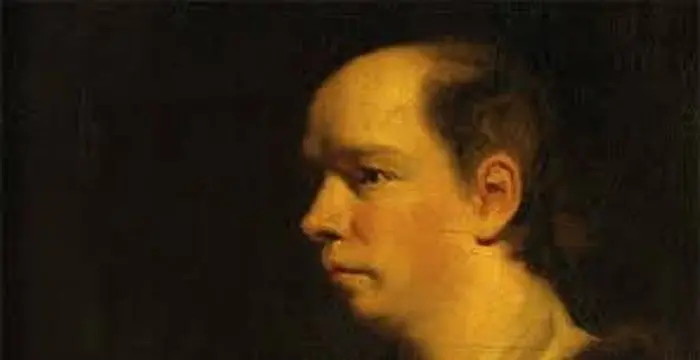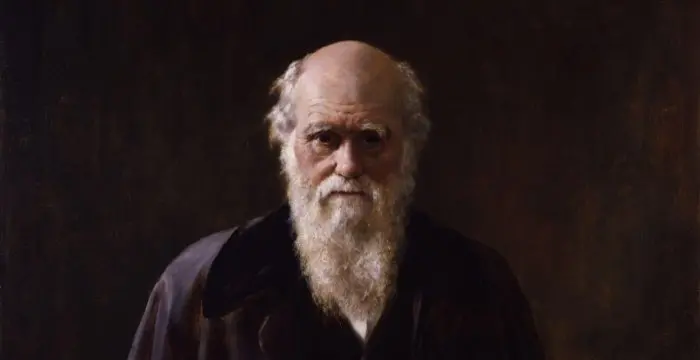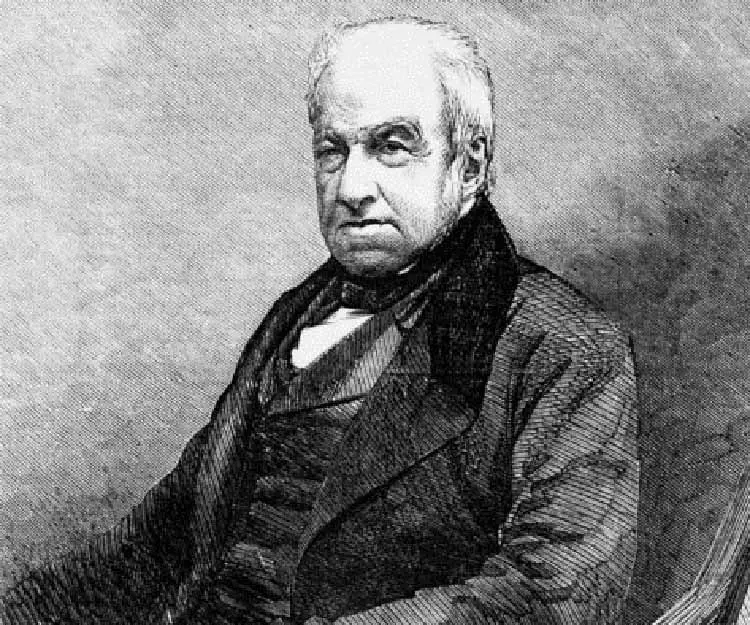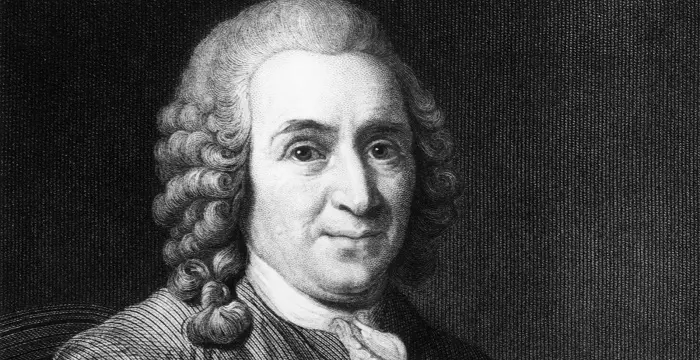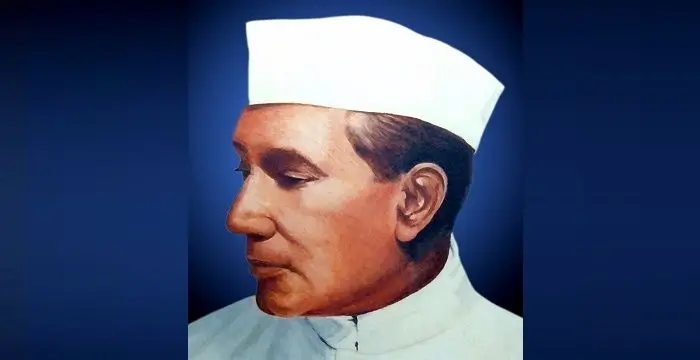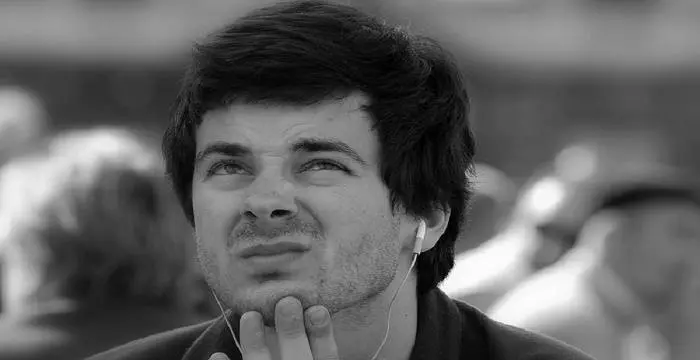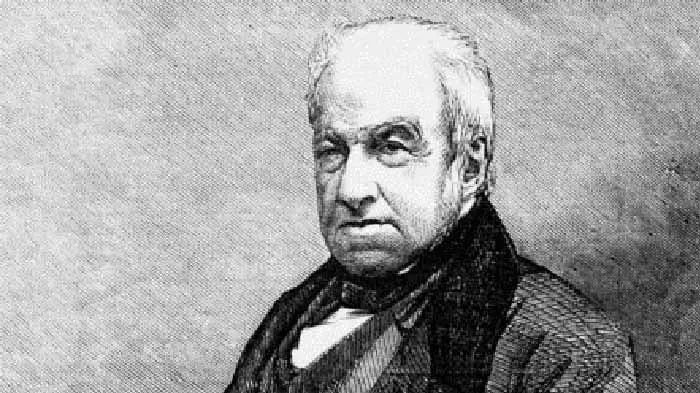
Robert Brown - Botanists, Family and Childhood
Robert Brown's Personal Details
Robert Brown was a renowned botanist, famous for having laid the foundation for what is today popularly called the ‘Brownian Motion’.Read on for detailed information about his childhood, profile, career and timeline
| Information | Detail |
|---|---|
| Birthday | December 21, 1773 |
| Died on | June 10, 1858 |
| Nationality | British, Scottish |
| Famous | University Of Edinburgh, Scientists, Botanists |
| Universities |
|
| Notable Alumnis |
|
| Birth Place | Montrose |
| Born Country | United Kingdom |
| Gender | Male |
| Sun Sign | Sagittarius |
| Born in | Montrose |
| Famous as | Botanist |
| Died at Age | 84 |
// Famous University Of Edinburgh
Sarojini Naidu
Sarojini Naidu was an Indian freedom fighter and poet. Read this brief biography to find more on her life.
Oliver Goldsmith
Oliver Goldsmith was an Anglo-Irish essayist and novelist of the 18th century. Go through this biography to know in details about his life, profile, childhood and timeline.
Charles Darwin
Charles Darwin was one of the most influential figures in human history. Go through this biography to get details about his life, profile and timeline.
Robert Brown's photo
Who is Robert Brown?
Considered as the pioneer of the 'Brownian Motion', Robert Brown, who set out to be a doctor, soon discovered his love for botany, thus changing the course of his life. As a botanist, he excelled, developing a passion for cryptogams, more commonly known as mosses. In his endeavour he worked in partnership with several other famous botanists including James Dickson and Sir Joseph Banks. One of his major contributions to this field of biology came when he went on an expedition to Australia, accompanying Sir Banks. It was on this voyage that he gathered most of the plant species which he explored in his lifetime. Though a major portion was lost in a shipwreck on his way back to Britain, what remained proved to be significant in the study of plants. Throughout his life, he studied all the specimens he had collected, publishing research papers on them in a bid to share this valuable knowledge. He was also appointed in high official positions at prestigious institutes like the ‘Royal Institute of the Netherlands', 'Royal Swedish Academy of Sciences' and the ‘Botanical Department of the 'British Museum'. His contribution to this field is considered monumental, even today, and hence several species of herbs and other plants have been named in his honour. Read on to know more about this ingenious botanist.
// Famous Botanists
Carl Linnaeus
Carolus Linnaeus was a renowned Swedish biologist popularly known as the ‘Father of Modern Taxonomy’ who founded the binomial nomenclature. Read on to know more about his childhood, career, profile and timeline
Charles Darwin
Charles Darwin was one of the most influential figures in human history. Go through this biography to get details about his life, profile and timeline.
Birbal Sahni
Birbal Sahni was an Indian palaeobotanist who founded the Birbal Sahni Institute of Palaeobotany in Lucknow. This biography of Birbal Sahni provides detailed information about his childhood, life, achievements, works & timeline.
Childhood & Early Life
Robert Brown was born to James Brown and his wife Helen on December 21, 1773, in Montrose, a coastal town in Scotland. James was an important member of the ‘Scottish Episcopal Church’, while his wife was the daughter of a priest.
The young boy was initially schooled at what is now known as the ‘Montrose Academy’. Upon completion of his primary education, he was enrolled at Aberdeen's 'Marischal College'. However he was forced to drop out when they decided to settle down in Edinburgh.
After his father's death, Robert joined the ‘University of Edinburgh’with the intention of becoming a doctor. However, his interests soon shifted to botany, and it seemed that the young man had finally found his calling.
As a botany enthusiast, it was the teachings and works of William Withering, John Walker, and George Don, that influenced him the most. Brown went on to discover the ‘Alopecurusalpinus’, a type of grass. Also, his first thesis, 'The botanical history of Angus', which was printed posthumously, became a favourite with the 'Edinburgh Natural History Society'.
Career
After quitting medical school, Robert started serving at the ‘Fifeshire Fencibles’ regiment in 1974. A year later, he was hired by the Royal Navy as assistant to the head surgeon in Ireland. Since his new job allowed him a lot of free time, the budding botanist ensured he employed it to increase his knowledge of plants.
Soon he decided to conduct an extensive study on mosses and other similar cryptogams, in collaboration with fellow botanist James Dickson. Robert's research was so remarkable that Dickson decided to publish the former's findings in his book 'Fasciculi Plantarum Cryptogamicarum Britanniae'.
Within the year 1800, Brown's efforts had paid off, and he was starting to gain recognition in Ireland as a botanist. He was considered as a major contender to the likes of José Correia da Serra, Withering, and James Dickson.
He had also been recommended for a membership to the prestigious ‘Linnean Society of London’, which specialized in the study of natural history. As a special recognition, botanist Lewis Weston Dillwyn named the ‘Conferva Brownii’, a type of algae, after Robert.
The same year, he was invited by English botanist, Sir Joseph Banks, to be a part of an expedition to New Holland (what we know as Australia in present times), as a replacement for explorer, Mungo Park. Since this had been his dream since two years, a post that he had initially been rejected for, Brown readily took up the offer.
In 1801, the expedition started, and the popular botanist was assigned the responsibility of gathering samples of flora and fauna in Australia. This work interested him and he continued it for almost four years, adding almost 3400 species of plants and animals to his repertoire.
Upon moving to Britain in mid-1805, the exceptional botanist further studied the samples he had brought back. He also published several research papers on the species he had examined, which included specimens like Lechenaultia, Sclerolaena, and Triodia, amongst others.
From 1809-10, Brown produced several theses publications based on his botanical investigations. 'On the natural order of plants called Proteaceae' (printed as 'On the Proteaceae of Jussieu') and 'Prodromus Florae Novae Hollandiae et Insulae Van Diemen' were the most famous.
In 1810 Robert was appointed by Sir Joseph Banks as his librarian, and within the next ten years, the library was transferred to his custody after his mentor's death.
From 1822-27, the botanist served in various capacities at esteemed establishments like the 'Linnean Society', 'Royal Swedish Academy of Sciences', and the ‘Royal Institute of the Netherlands'. The British Museum received the rights to Banks' library at the end of this period and hired Brown as the Keeper of the 'Banksian Botanical Collection'.
In 1827, while conducting an experiment on a plant named Clarkia pulchella, he closely studied the movement of particles in pollen grains. This helped him discover what is now known as the ‘Brownian Motion’.
The 'British Museum's 'Natural History Department' was separated into three branches in the year 1837, of which the 'Botany Department' saw Brown become its first supervisor.
In 1849, the 'Linnean Society' appointed this great botanist as their President, and he remained so for the next four years.
Major Works
When Robert Brown was probing into the characteristics of a plant called Clarkia pulchella, he observed the microscopic pollen grains that had been submerged in water. The botanist found tiny particles that had been discharged by the pollens, moving around in a random motion. He repeated this experiment, this time using particles that made up inorganic matter. The same was observed, and hence he inferred that the phenomenon, now famous as the ‘Brownian motion’, was not unique to living organisms.
Personal Life & Legacy
On June 10, 1858, the world saw the last of this exceptional botanist, when he passed away in Soho Square. He was interred in London's 'Kensal Green Cemetery'.
Many plant species have been named after this brilliant botanist, including Brunonia, Tetrodontium brownianum, and Eucalyptus brownii.
This Scottish botanist is the eponym of the Brown River in Tasmania, Mount Brown in Canada, and Point Brown in South Australia.
Trivia
British nurseryman, Richard Anthony Salisbury, was accused of plagiarism by this famous Scottish botanist, after he had attempted to memorise a reading of the latter's paper, 'On the natural order of plants called Proteaceae'. Salisbury had collaborated with fellow plant cultivator, Joseph Knight, to publish the paper 'On the cultivation of the plants belonging to the natural order of Proteeae', most of which was an appropriation.
The diminutive R. Br. is employed by researchers to cite this famous botanist from Scotland.
// Famous Scientists
Juliane Koepcke
Juliane Koepcke is a German-Peruvian biologist, who was the lone survivor among the 92 passengers and crew of the ill-fated LANSA Flight 508 that crashed in the Peruvian rainforest on 24 December 1971. Know more about her life in this biography.
Henry Cavendish
Henry Cavendish was a theoretical chemist and physicist, renowned for discovery of hydrogen and calculation of the mass of earth. To know more about his childhood, profile, timeline and career read on
Konstantin Tsiolkovsky
Konstantin Tsiolkovsky was a Russian rocket scientist and a pioneer of astronautics. This biography provides detailed information about his childhood, family, personal life, career, achievements, etc.
Robert Brown's awards
| Year | Name | Award |
|---|---|---|
Other | ||
| 0 | Copley Medal | |
Robert Brown biography timelines
- // 21st Dec 1773Robert Brown was born to James Brown and his wife Helen on December 21, 1773, in Montrose, a coastal town in Scotland. James was an important member of the ‘Scottish Episcopal Church’, while his wife was the daughter of a priest.
- // 1800Within the year 1800, Brown's efforts had paid off, and he was starting to gain recognition in Ireland as a botanist. He was considered as a major contender to the likes of José Correia da Serra, Withering, and James Dickson.
- // 1801In 1801, the expedition started, and the popular botanist was assigned the responsibility of gathering samples of flora and fauna in Australia. This work interested him and he continued it for almost four years, adding almost 3400 species of plants and animals to his repertoire.
- // 1805Upon moving to Britain in mid-1805, the exceptional botanist further studied the samples he had brought back. He also published several research papers on the species he had examined, which included specimens like Lechenaultia, Sclerolaena, and Triodia, amongst others.
- // 1809 To 1810From 1809-10, Brown produced several theses publications based on his botanical investigations. 'On the natural order of plants called Proteaceae' (printed as 'On the Proteaceae of Jussieu') and 'Prodromus Florae Novae Hollandiae et Insulae Van Diemen' were the most famous.
- // 1810In 1810 Robert was appointed by Sir Joseph Banks as his librarian, and within the next ten years, the library was transferred to his custody after his mentor's death.
- // 1822 To 1827From 1822-27, the botanist served in various capacities at esteemed establishments like the 'Linnean Society', 'Royal Swedish Academy of Sciences', and the ‘Royal Institute of the Netherlands'. The British Museum received the rights to Banks' library at the end of this period and hired Brown as the Keeper of the 'Banksian Botanical Collection'.
- // 1827In 1827, while conducting an experiment on a plant named Clarkia pulchella, he closely studied the movement of particles in pollen grains. This helped him discover what is now known as the ‘Brownian Motion’.
- // 1837The 'British Museum's 'Natural History Department' was separated into three branches in the year 1837, of which the 'Botany Department' saw Brown become its first supervisor.
- // 1849In 1849, the 'Linnean Society' appointed this great botanist as their President, and he remained so for the next four years.
- // 10th Jun 1858On June 10, 1858, the world saw the last of this exceptional botanist, when he passed away in Soho Square. He was interred in London's 'Kensal Green Cemetery'.
// Famous British peoples
Wentworth Miller
Wentworth Miller is an American actor and screenwriter who achieved recognition for his role in the TV series ‘Prison Break’.
Sophie Reade
Sophie Victoria Reade is a British model and reality show star. Let’s take a look at her family and personal life, including her age, birthday, boyfriends, and some interesting facts.
Josh Temple
Check out all that you wanted to know about Josh Temple (Slogoman), the famous British YouTube Personality; his birthday, his family and personal life, his girlfriends, fun trivia facts and more.
Yammy Xox
Check out all that you wanted to know about Yammy Xox, the famous British YouTube Personality; her birthday, her family and personal life, her boyfriends, fun trivia facts and more.
Grian
Grian is an English YouTube gamer and social media influencer. Check out this biography to know about his birthday, childhood, family life, achievements and fun facts about him.
Benjamin Atkinson
Benjamin Atkinson is the son of the world-renowned British actor and comedian, Rowan Atkinson. Check out this biography to know about his childhood, family, personal life, including his age, birthday, etc.
Robert Brown's FAQ
What is Robert Brown birthday?
Robert Brown was born at 1773-12-21
When was Robert Brown died?
Robert Brown was died at 1858-06-10
Where was Robert Brown died?
Robert Brown was died in London
Which age was Robert Brown died?
Robert Brown was died at age 84
Where is Robert Brown's birth place?
Robert Brown was born in Montrose
What is Robert Brown nationalities?
Robert Brown's nationalities is British, Scottish
What was Robert Brown universities?
Robert Brown studied at University Of Edinburgh, University of Edinburgh, Marischal College
What was Robert Brown notable alumnis?
Robert Brown's notable alumnis is University Of Edinburgh
What is Robert Brown's sun sign?
Robert Brown is Sagittarius
How famous is Robert Brown?
Robert Brown is famouse as Botanist
